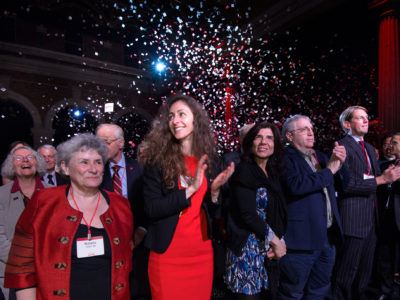-
Alumni-elected trustees reflect on their first year of service
Karen E. Stewart ’85 and Paul N. Hayre ’91 are the newest alumni-elected members of the Cornell University Board of Trustees. Here, they share their approaches for transitioning into their … Read more
-
Cornell crowdfunding breaks record with 65+ student groups
An unprecedented 65+ student groups are working to create positive change on campus and beyond in Cornell’s 2025 crowdfunding burst. Now in its 13th year, the program helps student groups … Read more
-
Captain Megan Unrath ’21 builds a legacy of service
In her first year at Cornell, Megan Unrath ’21 went on a field training exercise with her Army ROTC (Reserve Officer Training Corps) cohort. The group included ROTC students from … Read more
-
Rising above adversity to honor a mother’s legacy
Cornell couple creates a scholarship in the College of Human Ecology, honoring the alumna’s mother and supporting undergraduates with financial need.
-
Wagner and Van Schoick reflect on service
Two outgoing Cornell University trustees, who were elected by alumni and are finishing their four-year terms, reflect on their time on the board. As they conclude their tenure, they share … Read more










